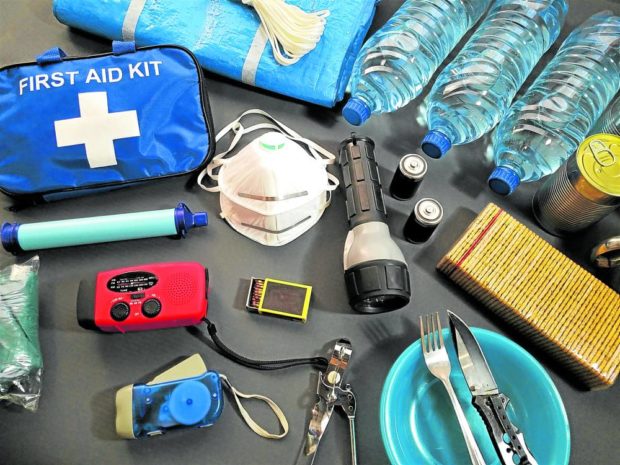Surviving the storm
Fierce rains and floods are not new to us Filipinos. As part of the typhoon belt of the Pacific, we are subject to numerous storms every year.
Unfortunately, we still continue to suffer from the destructive forces of Mother Nature, with our homes and properties often bearing the worst of the brunt. While there is no guaranteed way of ensuring our safety during these catastrophes, is there a way we can try to minimize destruction in the future?
Experts say there are. The following are the recommended measures we can adopt to prepare ourselves for the worst disasters that can hit our homes, whether you live in a tall condominium or a single detached house. With these steps, perhaps we will be able to sleep better during this season, knowing we have better chances of surviving storms.
For condominiums and apartments
While vertical housing is often managed and maintained by a formal association, it still makes sense to prepare your own unit for calamities.
The first thing one must do is to know the evacuation route and place designated for you. You should join any scheduled evacuation drills conducted in your building, or conduct your own with your family or house mates (if the exit routes are available to you during normal weather).
With regard to whether to run up or down the building, there is an ongoing debate about where is the best place to go. According to the Emergency Management Group of Pinellas County, you should never evacuate upward as you may be completely cut off from rescue if the grounds flood.
Our experience in past storms, however, tells us that our neighbors who live on the upper floors are better guarded against floods entering their homes. Regardless of your location, it is best to stay put where you are during a storm unless there is an advice or actual event happening before you that tells you to move out.
Before a calamity hits, it is also wise to inspect your home for existing roof or window leaks and other internal problems. While a leaking window may not hurt you physically during a storm, it can cause extensive damage on your walls or carpeting.
Also, bring in all movable furniture and items that are ordinarily located in your balcony. Close sliding doors and windows and stay away from them during the onslaught of rain as glass panels may be broken by strong winds. At best, stay in a windowless room inside your unit to avoid injuries (Satterwhite, 2022).
For horizontal developments
If you live in a low-density apartment or a house, there are other considerations you must take to become prepared for disaster.
The organization Habitat for Humanity recommends identifying first the calamities that are most likely to happen in your area. Familiarize yourself with the warning system and evacuation zones designated by your community. Always keep a battery-powered radio or cell phone on hand during disasters so you’ll be aware of the latest developments in your area.
If you live with your family or other people, it is best to discuss emergency plans beforehand and designate key persons who will prepare disaster supply kits. These kits should include three days worth of food and water supply for the whole household, important insurance documents, medicine, jackets, whistles and first aid kits.
You should also formulate your own evacuation plan that will provide adequate protection against the rain, floods or earthquakes.
Prior to the calamities, it will also be helpful if you check and repair items in your house that are broken or leaking. Gutters, downspouts and window and door seals should be cleaned and repaired to ensure they are in good working condition in times of rain.
If large in size, cracks on walls should be assessed professionally as they may pose structural risks. Check your roof as well to ensure that it remains durable against strong winds. Lastly, secure large trees located near your house so as to prevent them from falling on you during heavy rains.
For all structures
Whether you live in a high-rise or detached house on ground, preparation is key in literally weathering the storm.
If you’re in the process of moving houses, make sure that you are aware of the potential calamities that might occur in the area. You can check out online maps which show the location of fault lines in Metro Manila and other regions in our country. Homes located on the fault lines are at high risk of damage during earthquakes. If you do discover that your existing house stands on a fault line, consult a professional to ensure that necessary steps are taken to minimize the impact of huge calamities on your household.
Overall, each of us has a responsibility to be prepared for storms and other calamities. While our safety cannot be guaranteed anywhere, you can minimize risks if you eliminate potential sources of danger and harm in your home. By preparing well beforehand, we can reduce our chances of devastation even in the worst calamities.
References:
https://www.habitat.org; https://www.pinellascounty.org; Satterwhite, Gerald of the National Weather Service via https://www.wbrc.com




